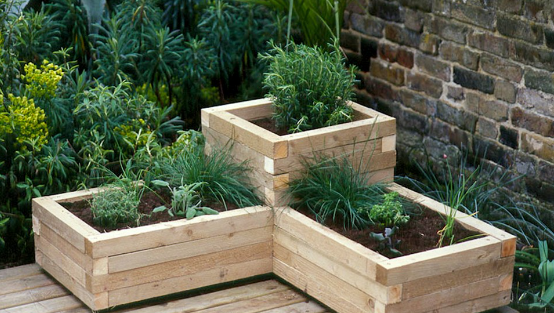Gardening has been a popular hobby for centuries, but not everyone has access to a large yard or outdoor space to grow plants. Fortunately, container gardening has become a popular alternative for those who lack space but still want to enjoy the benefits of gardening. Planters, also known as containers or pots, are an essential part of container gardening. In this article, we will explore the importance of planters in container gardening and the benefits of this type of gardening.
What are Planters?
Planters are containers that are specifically designed for growing plants. They come in a variety of sizes, shapes, and materials, including plastic, clay, metal, and wood. Planters can be used to grow a wide range of plants, including flowers, vegetables, and herbs.
The Importance of Planters in Container Gardening
Planters are an essential part of container gardening for several reasons. First, they provide a suitable environment for plants to grow. Planters are designed to hold soil and provide drainage holes to prevent water from accumulating at the bottom, which can lead to root rot. This helps plants to grow and thrive in a controlled environment, making it easier to manage their growth and health.
Second, planters are versatile and can be used in a variety of settings. They can be used indoors, on balconies, patios, or any other outdoor space. This allows people who do not have access to a yard to still enjoy gardening and the benefits that come with it.
Third, planters can be used to create a focal point in a garden or outdoor space. They come in various shapes, sizes, and colors, which can be used to add interest and visual appeal to any area. This is particularly useful for people who have small outdoor spaces and want to create an attractive and inviting area.
Fourth, planters can be used to grow plants that may not thrive in the ground. For example, some plants prefer well-drained soil or have specific soil requirements that are difficult to achieve in the ground. Planters allow gardeners to create a customized growing environment for their plants, making it easier to grow plants that may not thrive in other conditions.
Benefits of Container Gardening
Container gardening has several benefits that make it an attractive option for people who want to enjoy gardening but do not have access to a yard. First, it allows people to grow plants in a controlled environment, which can lead to healthier plants and better yields. This is particularly useful for people who live in areas with extreme weather conditions or have limited sunlight.
Second, container gardening is more accessible than traditional gardening. People who have physical limitations or disabilities can still enjoy gardening by using planters, which are easier to manage and maintain than a traditional garden.
Third, container gardening is less time-consuming than traditional gardening. It requires less maintenance, and there is no need to weed or till the soil. This makes it a great option for people who have busy schedules or do not have a lot of time to devote to gardening.
Fourth, container gardening is an excellent way to introduce children to gardening. It allows children to learn about plants and how they grow, while also giving them a sense of responsibility and ownership. Children can be involved in every aspect of container gardening, from planting the seeds to watering and caring for the plants.
How to Choose the Right Planter
Choosing the right planter is essential for successful container gardening. There are several factors to consider when choosing a planter, including size, material, and drainage.
Size: The size of the planter will depend on the size of the plant and its root system. As a general rule, the planter should be at least twice the size of the plant’s root system to allow for proper growth.
Material: Planters come in a variety of
materials, including plastic, clay, metal, and wood. Each material has its own benefits and drawbacks. Plastic planters are lightweight and easy to move around, but they may not be as durable as other materials. Clay planters are porous and allow for better air circulation, but they can be heavy and may crack in extreme temperatures. Metal planters are durable and weather-resistant, but they may not be suitable for plants that prefer a specific soil pH. Wood planters are natural-looking and can be treated to be weather-resistant, but they may require more maintenance than other materials.
Drainage: Proper drainage is essential for healthy plant growth. Look for planters that have drainage holes to allow excess water to drain out. This will prevent water from accumulating at the bottom of the planter and causing root rot.
In addition to these factors, consider the style and design of the planter. Choose a planter that complements the plants and the overall aesthetic of the area where it will be placed.
Conclusion
Planters are an essential part of container gardening, providing a suitable environment for plants to grow and thrive. Container gardening has several benefits, including accessibility, time-saving, and versatility. Choosing the right planter is essential for successful container gardening. When selecting a planter, consider factors such as size, material, and drainage, as well as the style and design of the planter. With the right planter and proper care, anyone can enjoy the benefits of container gardening and grow healthy and beautiful plants.
